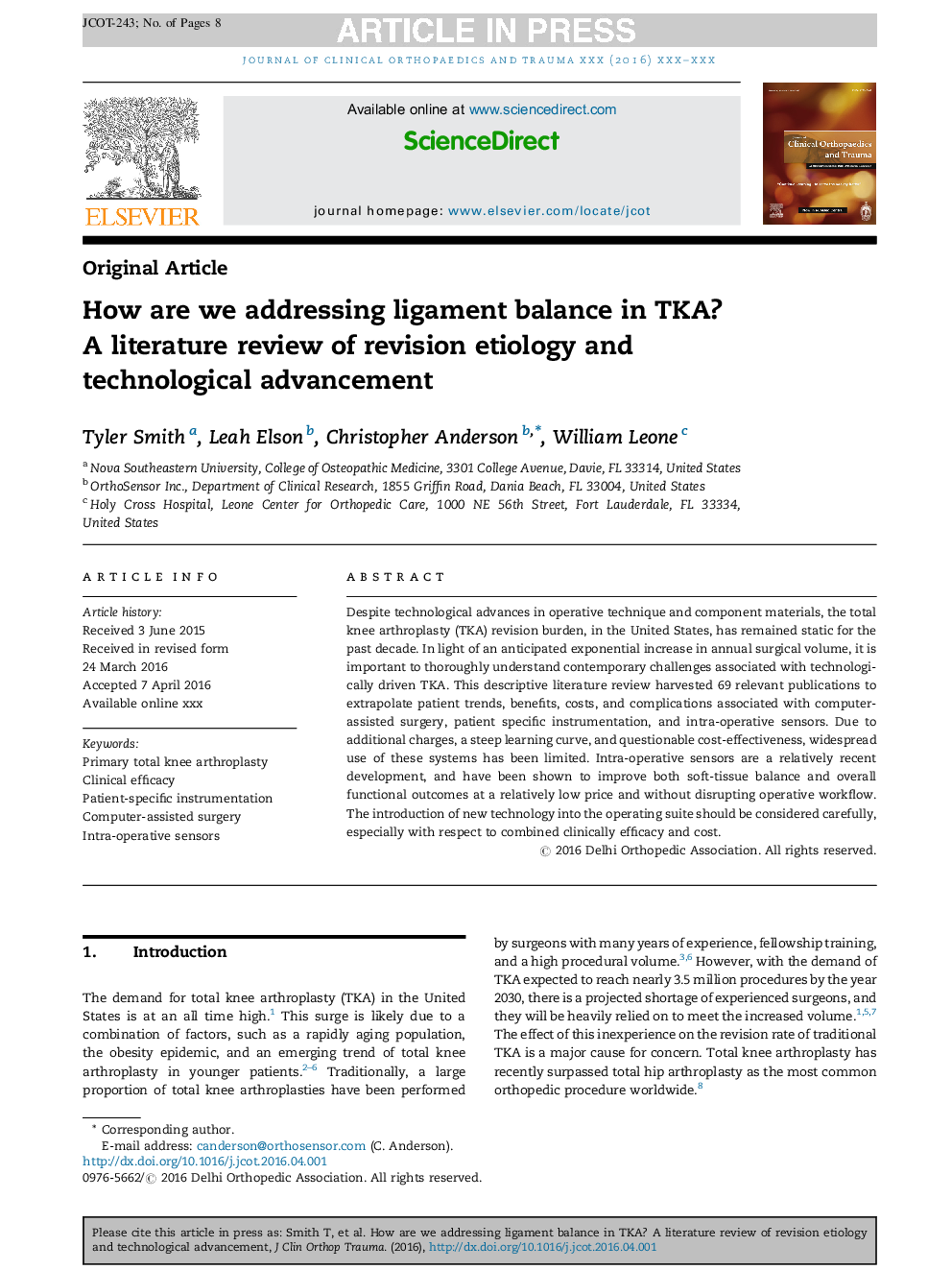| Article ID | Journal | Published Year | Pages | File Type |
|---|---|---|---|---|
| 5653349 | Journal of Clinical Orthopaedics and Trauma | 2016 | 8 Pages |
Abstract
Despite technological advances in operative technique and component materials, the total knee arthroplasty (TKA) revision burden, in the United States, has remained static for the past decade. In light of an anticipated exponential increase in annual surgical volume, it is important to thoroughly understand contemporary challenges associated with technologically driven TKA. This descriptive literature review harvested 69 relevant publications to extrapolate patient trends, benefits, costs, and complications associated with computer-assisted surgery, patient specific instrumentation, and intra-operative sensors. Due to additional charges, a steep learning curve, and questionable cost-effectiveness, widespread use of these systems has been limited. Intra-operative sensors are a relatively recent development, and have been shown to improve both soft-tissue balance and overall functional outcomes at a relatively low price and without disrupting operative workflow. The introduction of new technology into the operating suite should be considered carefully, especially with respect to combined clinically efficacy and cost.
Keywords
Related Topics
Health Sciences
Medicine and Dentistry
Emergency Medicine
Authors
Tyler Smith, Leah Elson, Christopher Anderson, William Leone,
